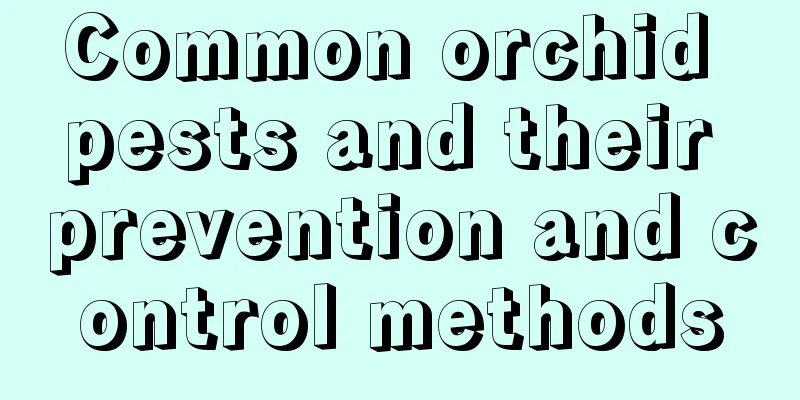Temperature conditions for plum blossoms to bloom (at what temperature are plum blossoms most likely to bloom)

What is the best blooming temperature for plum blossoms?Plum blossoms are relatively tolerant to cold and can tolerate temperatures as low as -15°C for a short period of time. They can bloom when the temperature is between 5°C and 10°C, which is also the temperature at which plum blossoms are most likely to bloom. However, plum blossoms do not like temperatures that are too high. When the temperature is above 20°C, it will affect their flowering. The suitable growth temperature for plum blossoms is between 18 and 20 degrees , so from November of each year to March of the following year is the most suitable time to cultivate plum blossoms. The temperature at this time is more suitable for the growth of plum blossoms. Why do plum blossoms bloom early?Normally plum blossoms bloom in February and March, but if you mistake the twelfth lunar month for spring, they will bloom early. In fact, this plum blossom should not be called flowering, but a physiological disorder . There are generally two reasons for early flowering. One is the weather being hot and cold. The other is the plum tree itself . How to maintain plum blossom potted plants to make them bloom more easilyCultivation pointsThe most suitable period for plum blossom cultivation is from November to March of the following year . When planting, spread a layer of broken pot pieces at the bottom of the pot to facilitate drainage and avoid nutrient loss. Then trim off the overly long taproot and a small amount of lateral roots, leaving more fibrous roots. Pour a small amount of soil into the pot, then place the mother plant in the pot and add soil. After adding soil, gently shake the flower pot to make the loose soil sink and bind tightly to the roots. Finally, water it sufficiently and place it in a sunny place . WateringPlum blossoms are not tolerant to water and humidity, so watering should be determined according to the dryness and wetness of the pot soil. Usually, the principle of watering should be "don't water if it's not dry, and water thoroughly if you do", to prevent excessive water from accumulating in the pot. Around June, during the flower bud differentiation period, the amount of watering should be reduced. At the same time, the flowers should receive sufficient light to make the plants bloom luxuriantly. In summer, you should water the plant enough, otherwise it will cause the leaves of the plum blossom to fall off and affect the formation of flower buds. During the peak growth period of the plum blossom, you should water it once a day , and gradually reduce watering in autumn when the weather cools down to promote the growth of branches. In the rainy season, plum blossoms generally do not need to be watered. If it rains continuously, the flower pots need to be tilted to avoid water accumulation in the pots. If you find that the leaves of the plum blossom are severely withered, you can put the whole plant in water, soak it for 40 minutes and then take it out, and it will return to normal. FertilizationPlum blossoms need to be fertilized with phosphorus and potassium fertilizers once in winter , and thin liquid fertilizers can be applied once in spring after flowering and in early autumn. Water and loosen the soil in the pot immediately after each fertilization to keep the soil in the pot loose. pruneIn the first year of planting, when the young plants are 25 to 30 cm tall, the tops should be cut off. After the plum blossom buds sprout, only 3 to 5 branches at the top should be retained as main branches. After the flowers wither the following year, the dense and overlapping branches should be cut off as soon as possible. Pinch the tops when the remaining branches are 25 cm long. After the third year, in order to make the shape of the plum plant beautiful, pruning should be carried out every year after the flowers fade or the leaves fall . |
<<: Are succulents harmful to the human body? (Is it harmful to grow succulents indoors?)
Recommend
How to store cut pumpkin? Can it be put in the refrigerator?
Pumpkin is a common food in people's daily li...
How long is the growing period of okra
How long is the growing period of okra The growth...
Difference Between Cornflower and Chamomile
1. Different plant types Cornflower is an annual ...
Blueberry cutting time and method
Blueberry cutting time The best time for blueberr...
These good things are "treasures" for growing flowers. Use them on Sansevieria and you can't stop it from sprouting!
1. Pine cones Generally speaking, if we want the ...
Why do fig leaves turn yellow?
1. Inappropriate light exposure Reason: Figs are ...
When is the best time to plant tomatoes?
Suitable time for planting cherry tomatoes Cherry...
Can I use egg shells when growing orchids? (The correct way to use egg shells to grow orchids)
Can egg shells be used to grow orchids? Although ...
Lipstick succulent cultivation methods and precautions How to grow lipstick succulent
Lipstick is also called Oriental Lipstick and Cha...
Which month is suitable for planting cotton?
When is cotton planted? Cotton is usually planted...
Ruolu's family breeding and precautions
How to grow Ruolu at home Light temperature If th...
Which month is suitable for planting?
Which month should I plant? The plant of 蕌头 is mo...
How to grow coffee orchid
How to raise The flowering period of coffee orchi...
When should garlic be planted?
Garlic, as an economic crop , can indeed bring hi...
What flowers to give on a first date
1. Yellow Rose It is not appropriate to give gran...









